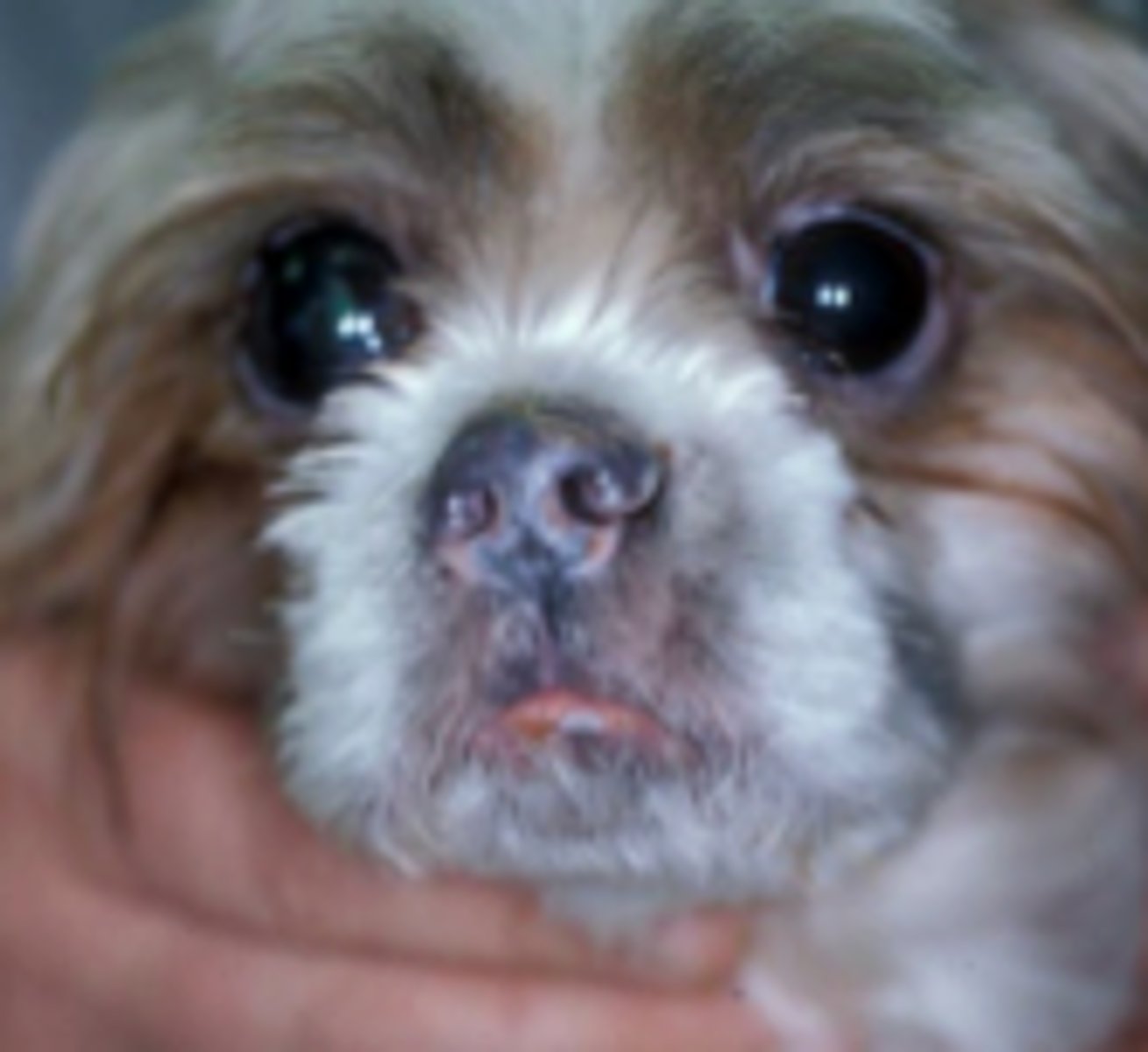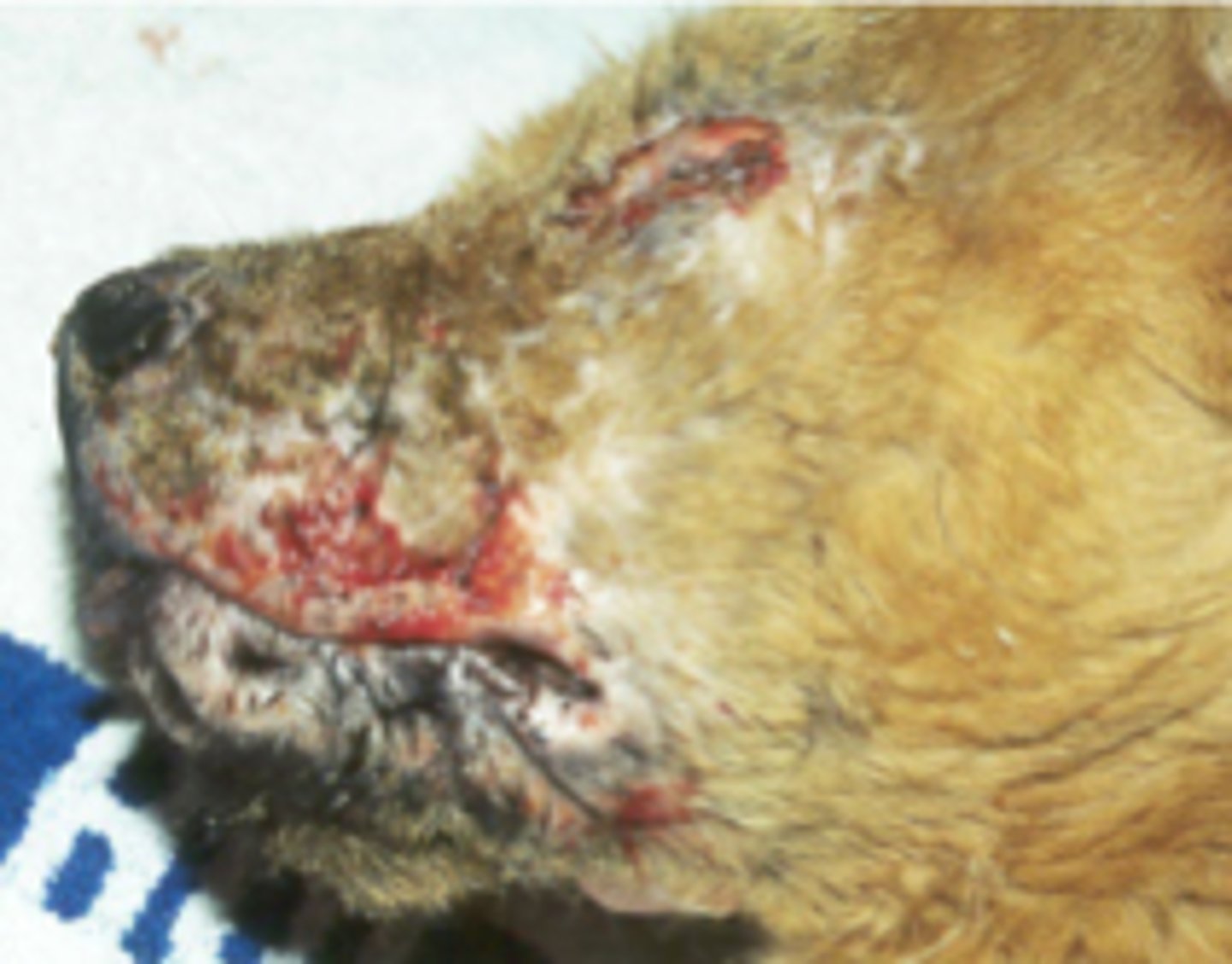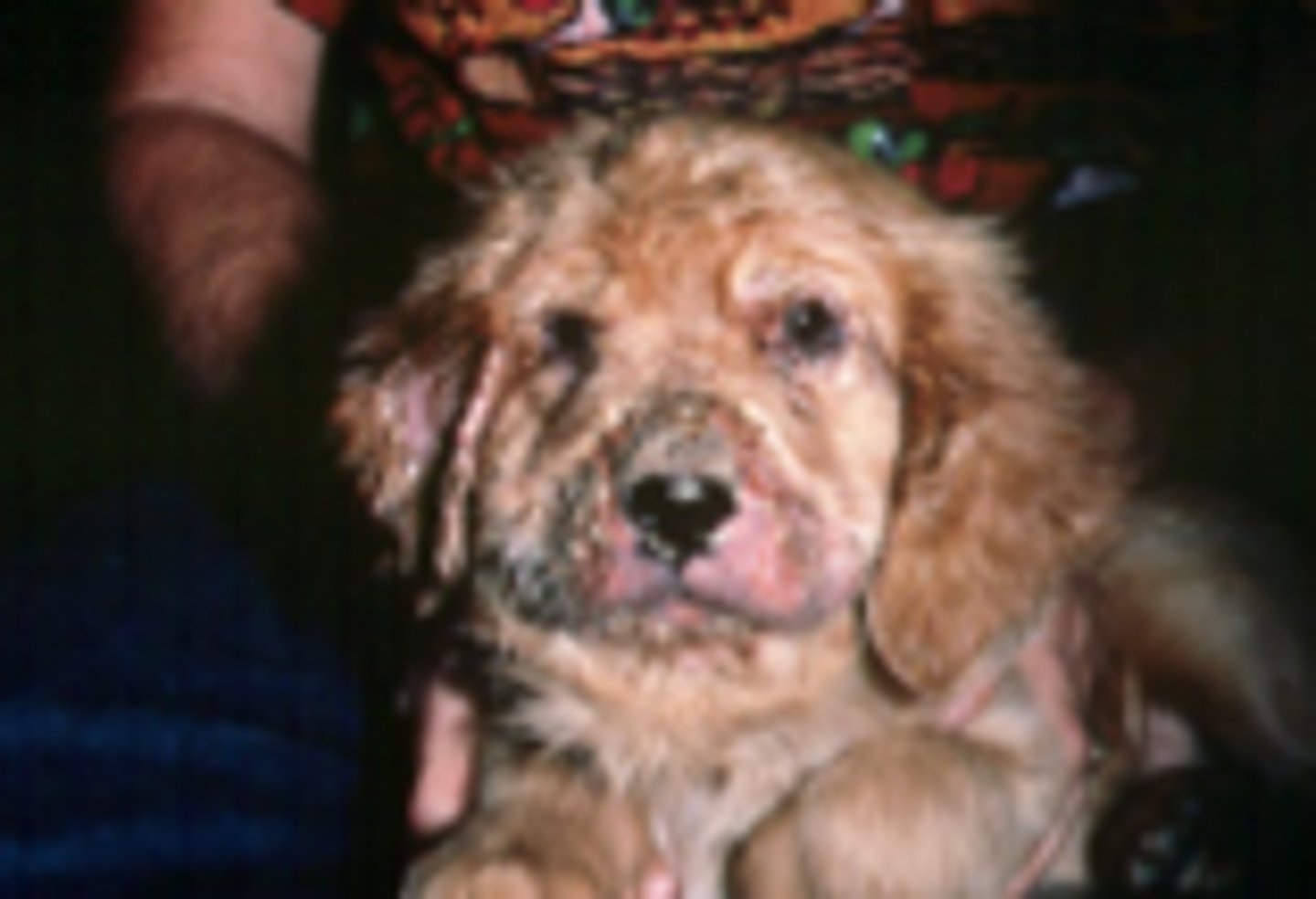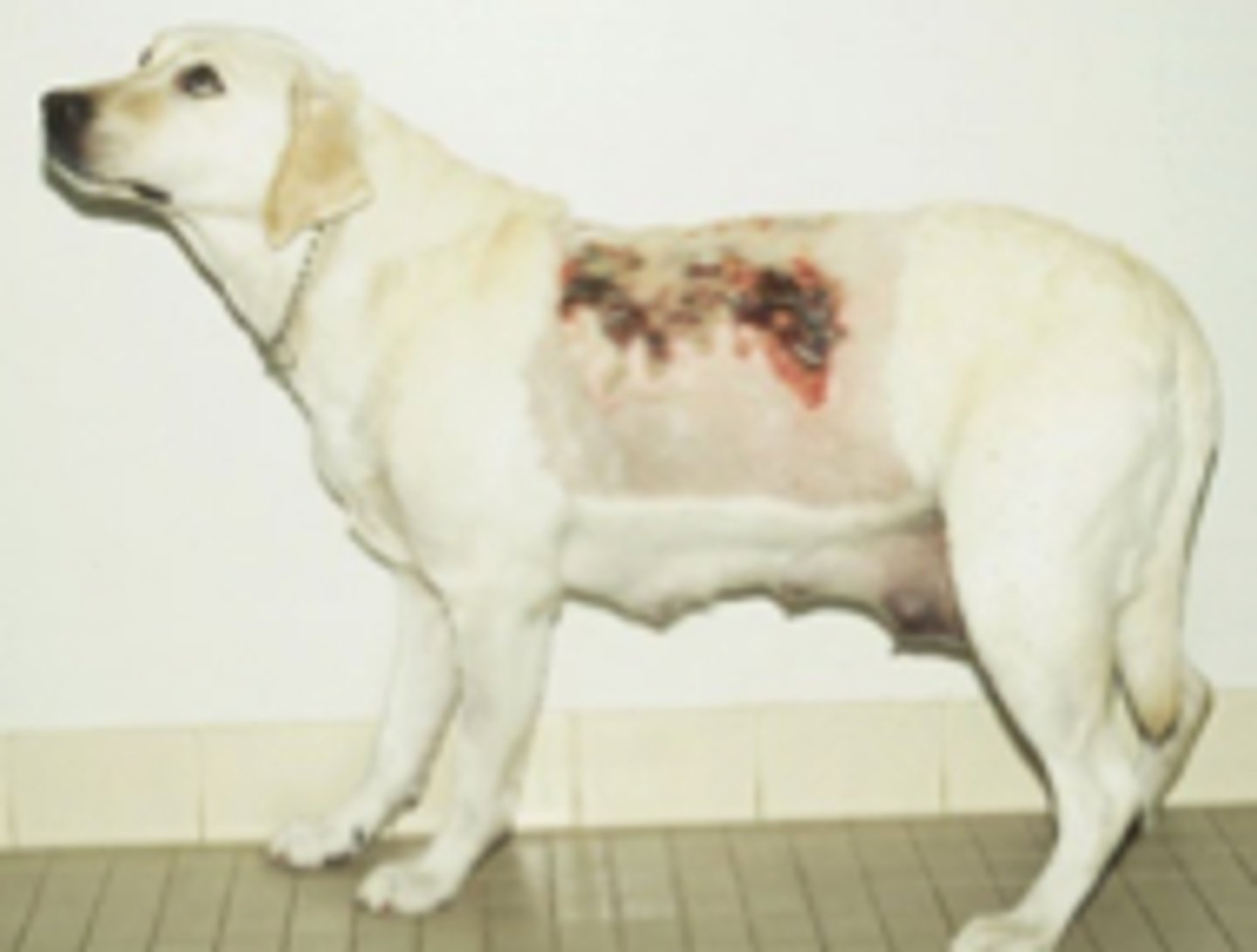Lecture 44 (Autoimmune Diseases)
1/19
There's no tags or description
Looks like no tags are added yet.
Name | Mastery | Learn | Test | Matching | Spaced |
|---|
No study sessions yet.
20 Terms
-affect planum (nose), pinnae (ears), and pads
-present with unusual or "weird" patterns
-may involve total body
-characterized by pustules rather than vesicles
-different from typical folliculitis patterns
what are the unique clinical patterns associated with autoimmune disease?

Pemphigus Foliaceus
what is the most common autoimmune skin disease?
-autoimmune skin diseases represent approximately 1.3-1.4% of veterinary dermatology cases
-they can be primary (spontaneous) or secondary (induced by drug reactions, paraneoplastic conditions, post-infection, or tissue damage)
what causes autoimmune skin diseases?

-recognize the clinical pattern
-perform cytology (acantholytic cells indicate pemphigus)
-complete blood count (CBC) and chemistry panel → look for inflammatory markers; SLE may show bone marrow or renal involvement
-ANA testing (positive in SLE and PE)
-skin biopsies sent to a dermatopathologist (essential for definitive diagnosis)
how should autoimmune skin diseases be diagnosed?

-Pemphigus Foliaceus/Erythematosus
-Discoid Lupus Erythematosus (DLE)
which autoimmune skin diseases have a good to fair prognosis?
-Systemic Lupus Erythematosus (SLE)
-Bullous Pemphigoid/Pemphigus Vulgaris
which autoimmune skin diseases have a poor prognosis?
-the goal is to control 90% of lesions 90% of the time, acknowledging the normal wax and wane process of these diseases
-control secondary infections
-suppress the immune response
-avoid UV light
how do you treat autoimmune skin diseases?
-topical and oral antibiotics
-topical Steroids or Protopic (0.1% Tacrolimus)
-nutritional support: essential fatty acids
-Tetracycline/Doxycycline and Niacinamide
-Cyclosporine (5-30mg/kg)
-Apoquel
-Glucocorticoid steroids at immunosuppressive doses
-chemotherapeutics (Azathioprine/Chlorambucil)
-Gold salts
which medications can be used to treat autoimmune skin diseases?
-acts through protease inhibition and immunosuppression
-few side effects (mainly GI signs)
-considered the most benign therapy option
MOA for Doxycycline/Tetracycline + Niacinamide in the treatment of autoimmune skin diseases
-treat until 80% response, then taper dose every 3 weeks
-goal is every other day dosing
discuss administering Steroids at an immunosuppressive dose for the treatment of autoimmune skin diseases
-characterized by pustules and crusts that wax and wane
-affects nose, ears, foot pads, trunk
-rarely affects mucocutaneous junctions
-presence of acantholytic cells on cytology is diagnostic
how do you diagnose Pemphigus Foliaceus?

-Discoid Lupus Erythematosus (DLE)
-common in Collies, German Shepherds, Shelties, Siberian Huskies, Brittany Spaniels, German Short-Haired Pointers
what is the second most common autoimmune skin disease (0.3% of canine dermatology)?

-known as "The Great Imitator"
-primary symptoms: arthritis (#1) and skin lesions (#2)
-can cause renal disease and bone marrow disease
what clinical signs are associated with Systemic Lupus Erythematosus (SLE)?

SLE cases
Antinuclear Antibody (ANA) test is 90% positive in which autoimmune skin diseases?
from drugs, infections (pyoderma), or technique issues
why are there many false positives with that ANA test in SLE cases?
-affects older dogs
-severe crusting on face, elbows, feet
-may present with liver failure
-requires biopsy for diagnosis
look-alike diseases:
what is Hepato-Cutaneous Syndrome?

-affects puppies
-presents with pustules, vesicles, and crusts on face and ears
-associated with cellulitis and lymphadenopathy
-puppies appear sick
look-alike diseases:
what is Juvenile Cellulitis?

-diagnosed based on breed and young age
-requires skin and muscle biopsies
-EMG shows abnormal spike potentials
look-alike diseases:
what is Dermatomyositis?

-immune-mediated reaction with toxic effects
-keratinocyte death (apoptosis)
-severe generalized lesions with target lesions
*cutaneous drug reactions
what is Erythema Multiforme?

-possibly a more severe form of erythema multiforme
-characterized by full-thickness necrosis
-usually affects dorsal areas
*cutaneous drug reactions
what is Toxic Epidermal Necrolysis?
